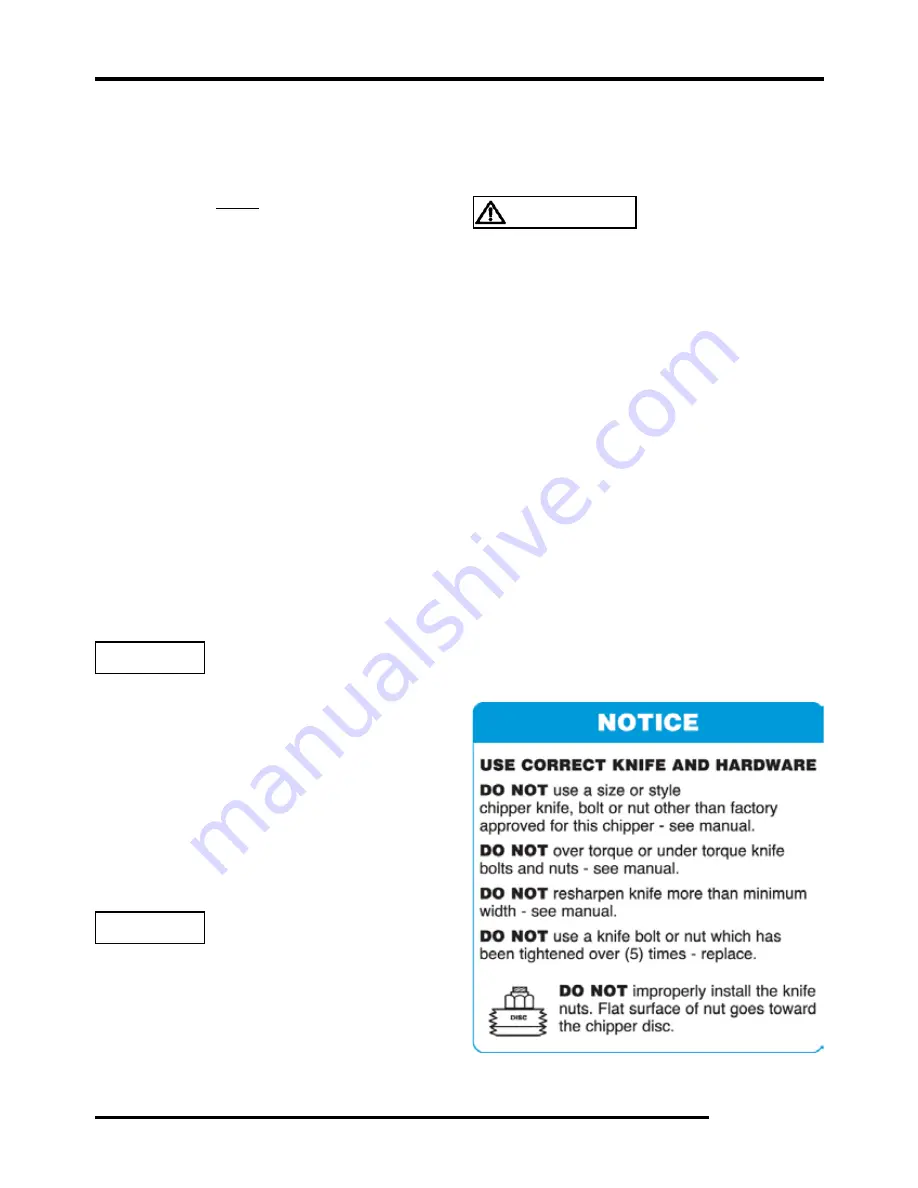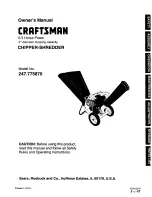
Bandit
Copyright 11/10
PAGE
MODEL 490
Only Bandit knives and hardware are recommended for use in your Bandit chippers. Only then can you be
assured of a quality product that fits and performs the best to the standards of excellence that is expected from
the Bandit chipper.
Chipper knives MUST be kept sharp at all times for
the ultimate chipper and knife performance. The main
cause of poor cutting performance is dull knives.
Dull Knives Cause:
- Excessive waste of engine horsepower
- Bad quality chips; chunks, slivers, etc.
- Excessive strain on knives and mounting hardware
- Excessive strain on chipper disc/drum bearings
and total machine
- Excessive chipping vibration damaging the machine
- Excessive strain on drives, PTO’s, engines, etc.
- Increase the probability of the discharge plugging
and decreases the throwing distance
- Loss of time and money
The Dulling Of Chipper Knives Is Caused By:
- Poor quality knives
- Improper anvil to knife clearance
- Force feeding wood faster than chipper will accept
- Dirt, grit, or foreign material on the wood
- Chipper knives ground at wrong angle
- Improper care of knives and knife hardware
These are just a few factors, there are other situations
that can lead to the dulling of chipper knives.
KNIFE GRINDING AND FILING
Many times a chipper knives cutting edge/point
can be brought back to a good edge with a #10 Flat
Bastard Mill File. This can reduce the amount of
regrinding.
Typical Knife Grinding Angles:
“Bolt-In” Knives = 0° to 0 1/
°
Angle
Knives should be replaced in sets. These sets are
determined by the amount of resharpening done to the
knives (knife width). Regrinding knives reduces the
width of the knife. Knife replacement should be done in
sets of the same width knives. That will reduce chipping
vibration and increase chipping performance.
NOTICE
Do not grind the knives in a direction which produces
a radius, or hollow grind, on the surface of the knife.
Strength and life of the cutting edge is reduced.
- For maximum chipper efficiency, the original
cutting angle must be maintained when the knives
are sharpened. The knives should be machine
ground to produce a flat, straight edge.
- Do not sharpen the knives with a hand held power
grinder. The knife angle can’t be held and heat will
distort the metal.
- Sharpening techniques should be the same as
those employed for any high carbon steel cutting
edge. Use a coolant and exercise care not to
draw temper or crack the cutting edges by
excessive heating.
- Knives may be sharpened repeatedly as long as their
original width is not reduced to less than the specified
minimum width. If a knife measures less than the
specified minimum width after sharpening, it must be
discarded.
- Inspect the knives after grinding to ensure the
knives are free of cracks.
- Maintain spare sharpened knives to avoid
downtime for knife sharpening.
CAUTION
CHIPPER SECTION
- Keep knives sharp.
- Keep knife angle correct when grinding.
- Do not over grind so knife is narrower than allowed
width, or you will pack wood and break knives.
- Use correct knife size, knife quality, knife mounting
hardware, and torque knife mounting hardware to
the specified torque.
- Replace knife mounting hardware after (5) times of
tightening.
NOTICE
















































